Towing 101: Guide to Hitch Pin Sizes
2025-09-30 11:31:12
Picture this scenario: you're all set for a weekend camping trip with your travel trailer loaded and ready to go. As you approach your vehicle's receiver hitch, you realize the trailer hitch pin you grabbed doesn't fit properly. The frustration of discovering the wrong size pin can turn an exciting adventure into a delayed nightmare. Understanding trailer hitch pin sizes is crucial for every towing enthusiast, whether you're hauling construction equipment, recreational vehicles, or agricultural machinery. This comprehensive guide will walk you through everything you need to know about selecting the right receiver trailer hitch pin for your specific towing needs, ensuring safe and secure connections every time you hit the road.
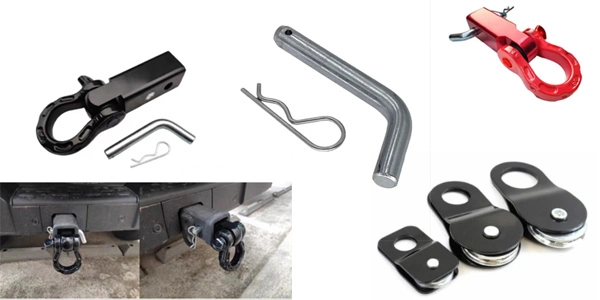
Understanding Standard Trailer Hitch Pin Dimensions
The foundation of safe towing begins with understanding the standardized dimensions that govern trailer hitch pin sizing across the industry. When discussing trailer hitch pin specifications, it's essential to recognize that manufacturers have established clear standards to ensure compatibility and safety across different vehicle and trailer combinations.
-
Industry Standard Pin Diameters
There are two standard diameters when it comes to hitch pins: 1/2" and 5/8", which form the backbone of the modern towing industry. These measurements aren't arbitrary; they've been carefully engineered to provide optimal strength-to-weight ratios for different towing applications. The receiver trailer hitch pin diameter directly correlates with the weight capacity and hitch class, making proper selection critical for safe operation. The 1/2-inch trailer pin typically serves lighter-duty applications, including Class I and Class II hitches that handle loads up to 3,500 pounds gross trailer weight. These smaller diameter pins provide sufficient strength for recreational trailers, boat trailers, and light utility trailers while maintaining ease of insertion and removal. The manufacturing process for these pins involves precision machining to ensure consistent diameter tolerances, typically within 0.002 inches, which prevents binding in the receiver tube while maintaining structural integrity. Conversely, the 5/8-inch trailer hitch pin represents the heavy-duty standard for Class III, IV, and V hitches. These larger diameter pins can withstand the tremendous forces generated by heavy trailers, construction equipment, and commercial applications. The increased cross-sectional area provides approximately 56% more material than the 1/2-inch version, translating to significantly higher shear strength ratings. Professional fleet operators and construction companies rely on these robust pins for daily operations where failure isn't an option.
-
Pin Length Variations and Applications
Beyond diameter considerations, trailer hitch pin length plays a crucial role in ensuring proper fit and function across various receiver hitch designs. Standard lengths typically range from 2.5 inches to 6 inches, with the most common measurements being 3 inches, 4 inches, and 5 inches. The selection depends primarily on the receiver tube wall thickness and the specific ball mount or accessory being secured. Shorter pins, typically 2.5 to 3 inches, work well with standard receiver tubes that have minimal side-to-side clearance requirements. These are commonly found in passenger vehicle applications where space constraints and weight considerations favor compact designs. However, when dealing with heavy-duty receiver hitches or ball mounts with extended shanks, longer pins become necessary to ensure complete penetration through both receiver walls and the ball mount assembly. The precision manufacturing of trailer pins involves multiple quality control checkpoints to ensure dimensional accuracy. Each pin must meet strict tolerances for both diameter and length to guarantee proper fit in standardized receiver tubes. Material selection also plays a vital role, with most quality pins manufactured from high-strength steel alloys that undergo heat treatment processes to achieve optimal hardness and ductility balance.
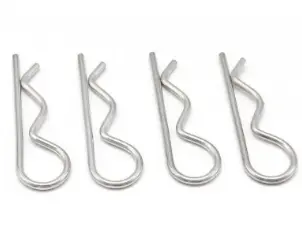
Matching Hitch Classes with Appropriate Pin Sizes
The relationship between hitch class and trailer hitch pin size follows established industry protocols that ensure safety and performance across all towing applications. Understanding this correlation helps vehicle owners make informed decisions when selecting towing components and ensures compliance with manufacturer specifications.
-
Class I and II Hitch Requirements
Class 1 and 2 hitches use a 1/2-inch hitch pin, reflecting their design parameters for lighter towing duties. Class I hitches, with their 1-1/4 inch receiver opening, typically handle up to 2,000 pounds gross trailer weight and 200 pounds tongue weight. The 1/2-inch receiver trailer hitch pin provides adequate strength for these applications while maintaining the lighter weight characteristics that appeal to passenger car owners. Class II hitches expand the capacity to 3,500 pounds gross trailer weight and 350 pounds tongue weight, yet still utilize the same 1/2-inch trailer pin standard. This consistency simplifies inventory management for both consumers and retailers while maintaining the ease of use that makes these hitch classes popular for recreational towing. The receiver opening typically measures 1-1/4 inches square, creating a standardized platform that works with various ball mounts and accessories. The engineering behind these specifications considers multiple factors including material stress, fatigue life, and ease of operation. The 1/2-inch diameter provides sufficient cross-sectional area to handle the shear forces generated during normal towing operations, emergency braking, and cornering maneuvers. Quality control testing for these pins includes tensile strength verification, ensuring each unit can withstand forces well beyond normal operating conditions.
-
Heavy-Duty Class III, IV, and V Specifications
Class 3, 4, and 5 use a 5/8-inch hitch pin, reflecting the increased demands of heavy-duty towing applications. Class III hitches, featuring 2-inch receiver openings, handle up to 8,000 pounds gross trailer weight and 800 pounds tongue weight. The transition to 5/8-inch trailer hitch pin diameter provides the necessary strength increase to manage these elevated loads safely. Class IV hitches push capabilities to 10,000 pounds gross trailer weight with 1,000 pounds tongue weight capacity, while Class V hitches can handle up to 17,000 pounds gross trailer weight and 1,700 pounds tongue weight. Throughout this range, the 5/8-inch receiver trailer hitch pin remains the standard, demonstrating the robust engineering margins built into this specification. The manufacturing requirements for heavy-duty trailer pins involve specialized steel alloys and heat treatment processes that achieve Rockwell hardness ratings between 28-35 HRC. This hardness range provides optimal combination of strength and toughness, preventing both brittle failure and excessive deformation under load. Surface treatments, including zinc plating or powder coating, provide corrosion resistance essential for long-term durability in harsh operating environments. Professional fleet applications often specify additional requirements for heavy-duty pins, including traceability documentation, material certificates, and periodic inspection intervals. These enhanced standards reflect the critical nature of commercial towing operations where equipment failure can result in significant financial losses and safety hazards.
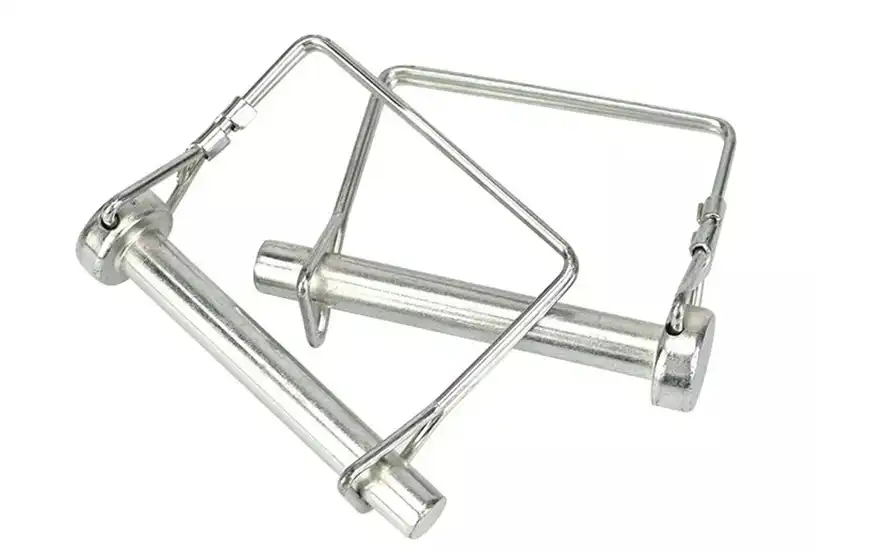
Material Construction and Durability Factors
The material composition and construction methodology of trailer hitch pins directly impact their performance, longevity, and reliability in demanding towing applications. Understanding these factors helps consumers make informed decisions when selecting pins for specific use cases.
-
High-Grade Steel Specifications
Quality trailer pin manufacturing begins with carefully selected steel alloys that provide optimal strength-to-weight characteristics. Most premium pins utilize medium-carbon steel compositions, typically containing 0.35-0.45% carbon content, which provides excellent balance between strength and workability. These alloys undergo controlled heat treatment processes that achieve consistent mechanical properties throughout the pin structure. The forging process used in quality trailer hitch pin production creates grain structures that align with the pin's geometry, maximizing strength along critical load paths. This manufacturing approach contrasts with lower-quality pins that may be machined from bar stock, potentially creating stress concentrations and reducing fatigue life. Forged pins typically demonstrate 15-20% higher strength ratings compared to machined alternatives. Surface hardening treatments, such as induction hardening or case hardening, create wear-resistant surfaces while maintaining tough core properties. This dual-layer approach prevents excessive wear at contact points while preserving the pin's ability to absorb shock loads without fracturing. Quality control testing includes hardness verification at multiple points to ensure consistent treatment throughout the pin surface. Dimensional stability represents another critical aspect of premium trailer pin construction. Precision grinding operations ensure diameter tolerances remain within 0.001-0.002 inches, preventing binding in receiver tubes while maintaining proper load distribution. These tight tolerances become particularly important in commercial applications where pins may be inserted and removed multiple times daily.
-
Corrosion Protection Technologies
Environmental exposure poses significant challenges for receiver trailer hitch pin longevity, particularly in coastal regions, northern climates with road salt exposure, and industrial environments. Advanced surface treatment technologies have evolved to address these challenges while maintaining the pin's structural integrity and ease of operation. Zinc electroplating remains the most common corrosion protection method, providing a sacrificial barrier that prevents rust formation on the underlying steel substrate. The plating thickness typically ranges from 0.0002 to 0.0005 inches, balancing protection with dimensional accuracy requirements. Post-plating chromate conversion coatings enhance corrosion resistance and provide the characteristic yellow or clear appearance seen on many trailer pins. Powder coating technology offers enhanced durability and appearance retention compared to traditional plating methods. The electrostatic application process creates uniform coating thickness, typically 0.002-0.004 inches, that provides excellent chip resistance and color retention. Popular colors include black, silver, and safety yellow, with custom colors available for fleet identification purposes. Stainless steel construction represents the premium approach to corrosion resistance, particularly for marine applications or regions with severe environmental conditions. Grade 316 stainless steel provides excellent corrosion resistance while maintaining strength properties suitable for heavy-duty towing. However, the higher material cost and specialized manufacturing requirements result in significantly higher prices compared to carbon steel alternatives.
Selecting the Right Pin for Your Towing Application
Choosing the appropriate trailer hitch pin involves more than simply matching diameter and length specifications. Successful selection requires understanding the specific demands of your towing application, environmental conditions, and operational requirements.
-
Load Capacity Considerations
The relationship between trailer hitch pin strength and towing capacity involves complex engineering calculations that account for multiple loading scenarios. Beyond the obvious vertical loads created by trailer tongue weight, pins must withstand lateral forces generated during turns, longitudinal forces during acceleration and braking, and dynamic loads created by road irregularities and trailer oscillation. Safety factors built into quality receiver trailer hitch pin designs typically provide 3:1 to 4:1 margins above rated loads. This means a pin rated for 8,000-pound applications can typically withstand 24,000 to 32,000 pounds before failure. However, these margins assume proper installation, compatible components, and normal operating conditions. Overloading, misalignment, or component wear can significantly reduce these safety margins. Professional applications often require documented load ratings and certification standards that exceed typical consumer requirements. Fleet operators may specify pins that meet DOT requirements, military specifications, or industry-specific standards that mandate enhanced testing protocols and quality assurance procedures. These requirements reflect the critical nature of commercial towing operations where failure can result in significant liability exposure. The selection process should also consider dynamic loading factors that can multiply apparent trailer weights during emergency maneuvers. Hard braking, evasive steering, and rough road conditions can create instantaneous loads that exceed static tongue weights by factors of 2:1 or higher. Quality trailer pins account for these scenarios through conservative design approaches and rigorous testing protocols.
-
Environmental and Operational Factors
Operating environment significantly influences trailer pin selection, particularly regarding corrosion resistance, temperature extremes, and maintenance accessibility. Marine environments demand enhanced corrosion protection, while construction sites may require pins that resist damage from debris and harsh handling. Temperature considerations affect both material properties and operational characteristics. Extreme cold can increase material brittleness, while high temperatures may affect surface treatments and lubricants. Quality trailer hitch pin manufacturers specify operating temperature ranges and may recommend different materials or treatments for extreme conditions. Maintenance accessibility varies significantly between applications, influencing pin design and material selection. Fleet vehicles with daily pin removal may benefit from specialized designs with integral clips or tethers that prevent loss. Recreational applications with infrequent use might prioritize corrosion resistance and long-term storage characteristics over ease of operation. Qingdao Ruirui Machinery Co., LTD addresses these diverse requirements through comprehensive customization capabilities. Their engineering team works closely with customers to develop specialized trailer pin solutions that meet specific environmental and operational demands. Whether requiring special materials, custom dimensions, or enhanced surface treatments, their manufacturing capabilities can deliver tailored solutions that optimize performance and reliability.
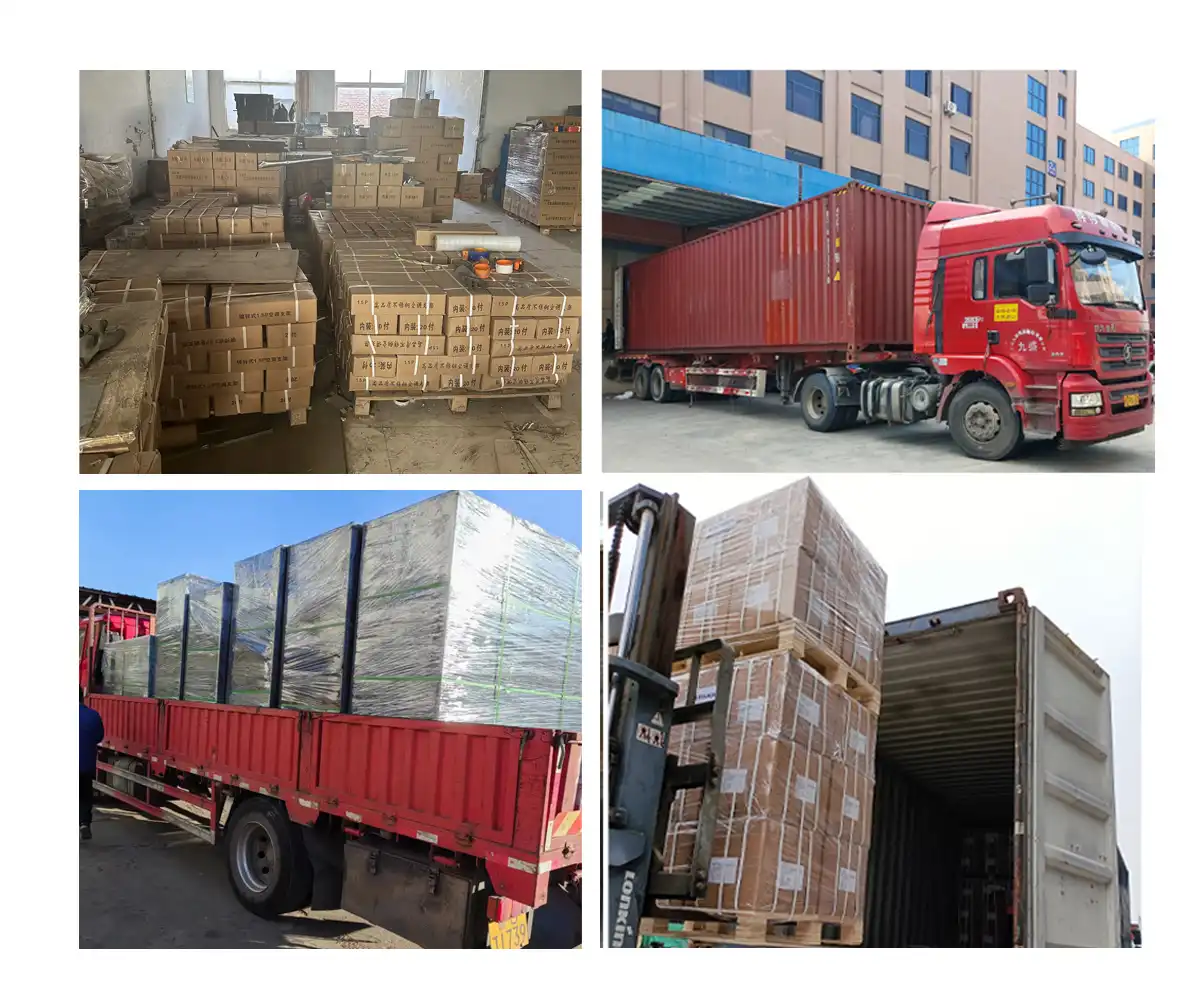
Professional Installation and Safety Guidelines
Proper installation and safety practices surrounding trailer hitch pin use are fundamental to towing safety and equipment longevity. Even the highest quality receiver trailer hitch pin can fail catastrophically if improperly installed or maintained.
-
Installation Best Practices
Correct trailer pin installation begins with thorough inspection of both the pin and receiver components. The receiver tube interior should be clean and free from debris, corrosion, or damage that could prevent proper pin insertion or create stress concentrations. A light coating of appropriate lubricant can ease installation while providing long-term corrosion protection at contact points. Pin insertion should be smooth and complete, with the pin extending fully through both receiver walls and the ball mount assembly. Forcing a pin that doesn't fit properly can indicate dimensional problems, debris, or component wear that requires attention. The securing mechanism, whether clip, cotter pin, or integrated lock, must engage completely and show no signs of damage or excessive wear. Alignment verification ensures that all towing components work in harmony without binding or creating stress concentrations. The trailer hitch pin should be perpendicular to the receiver tube centerline, with no visible deflection or binding when the trailer tongue moves through its normal range of motion. Misalignment can create premature wear, increased loading, and potential failure points. Regular inspection schedules should be established based on usage patterns and operating conditions. High-use applications may require daily visual inspections, while recreational users might inspect pins monthly or before each towing event. Inspection criteria should include visual examination for cracks, wear, corrosion, and proper fit, with immediate replacement recommended for any questionable conditions.
-
Safety Protocols and Compliance
Safety protocols surrounding trailer hitch pin use extend beyond simple installation procedures to encompass comprehensive towing safety practices. The pin represents just one component in a complex system where failure of any element can result in catastrophic consequences. Pre-trip safety checks should verify pin installation, securing mechanism engagement, and overall system integrity. This inspection should occur after the trailer is connected but before departing, allowing time to address any issues without schedule pressure. Post-trip inspections help identify wear patterns or developing problems before they become critical. Backup safety systems, including safety chains and brake controllers, provide redundancy that can prevent catastrophic failure even if primary connections fail. However, these systems cannot compensate for improper pin selection or installation, emphasizing the importance of getting the primary connection right from the beginning. Documentation requirements for commercial applications may include inspection logs, maintenance records, and component traceability information. These records demonstrate due diligence in equipment maintenance and can provide valuable liability protection in case of incidents. Professional fleet operators often develop standardized inspection forms and maintenance schedules that ensure consistent application across their operations.
Conclusion
Selecting the proper trailer hitch pin size is fundamental to safe and reliable towing operations across all applications. Understanding the relationship between hitch classes, pin dimensions, and load requirements ensures optimal performance and safety for every towing scenario.
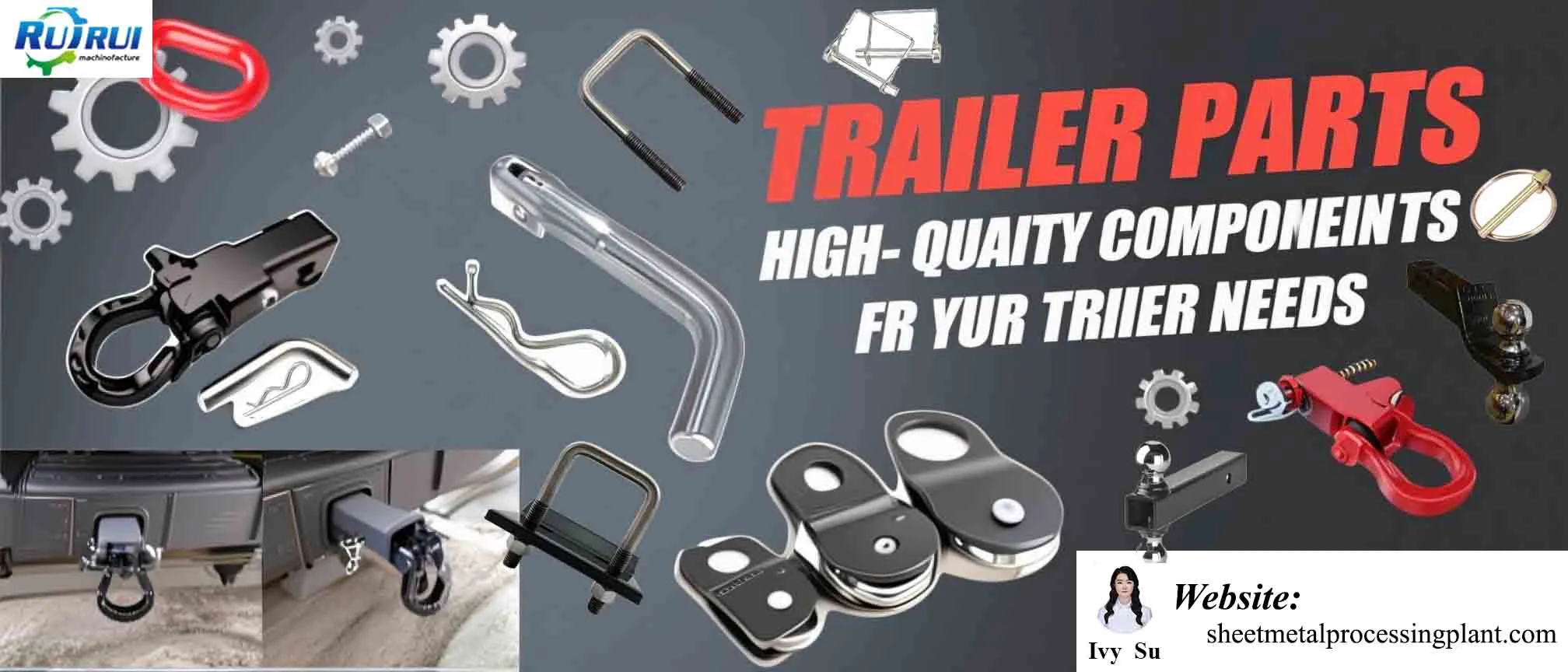
Cooperate with Qingdao RUIRUI Machinary Co., LTD.
As a trusted China trailer hitch pin manufacturer, Qingdao RUIRUI Machinery Co., LTD. combines advanced manufacturing capabilities with comprehensive quality assurance to deliver superior trailer pin solutions. Established in 2016, our facility features eight automated production lines producing 130,000 annual pieces with ISO 9001, ISO 14001, and OHSAS 18001 certifications ensuring consistent quality standards.
Our expertise extends beyond basic trailer pin manufacturing to include custom solutions utilizing CNC machining, laser cutting, progressive stamping, and specialized surface treatments including powder coating, plating, and electrophoresis. Whether you require standard specifications or custom designs, our experienced R&D team delivers innovative solutions backed by comprehensive technical support and after-sales service.
As a leading China trailer hitch pin supplier and China trailer hitch pin wholesale provider, we offer competitive trailer hitch pin prices without compromising quality. Our high quality trailer hitch pin products serve over 80 countries, providing reliable solutions for commercial fleets, construction equipment, and recreational applications. For trailer hitch pin for sale inquiries, contact our team at info@qdkshd.com for personalized quotes and technical assistance.
FAQ
Q: What's the difference between 1/2-inch and 5/8-inch trailer hitch pins?
A: The 1/2-inch pins are designed for Class I and II hitches handling up to 3,500 lbs, while 5/8-inch pins serve Class III, IV, and V hitches for loads up to 17,000 lbs.
Q: How do I determine the correct pin length for my receiver hitch?
A: Measure your receiver tube thickness and ball mount width, then add 0.5-1 inch for proper clip engagement. Common lengths range from 3-5 inches.
Q: Can I use a smaller diameter pin if it fits in my receiver?
A: No, always use the manufacturer-specified pin diameter. Using undersized pins reduces load capacity and creates safety hazards.
Q: How often should I replace my trailer hitch pin?
A: Replace pins showing wear, corrosion, or damage. High-use applications may require annual replacement, while recreational use typically allows 3-5 years with proper maintenance.
References
1. Society of Automotive Engineers. "Trailer Hitch Pin Design Standards and Testing Procedures." SAE International Standards Committee.
2. National Highway Traffic Safety Administration. "Federal Motor Vehicle Safety Standards for Trailer Hitches." Department of Transportation.
3. American Society for Testing and Materials. "Standard Specification for Trailer Coupling Pins." ASTM Committee on Steel Products.
4. Trailer Manufacturers Association. "Industry Guidelines for Hitch Pin Selection and Installation." Equipment Standards Division.
Send Inquiry
You may like